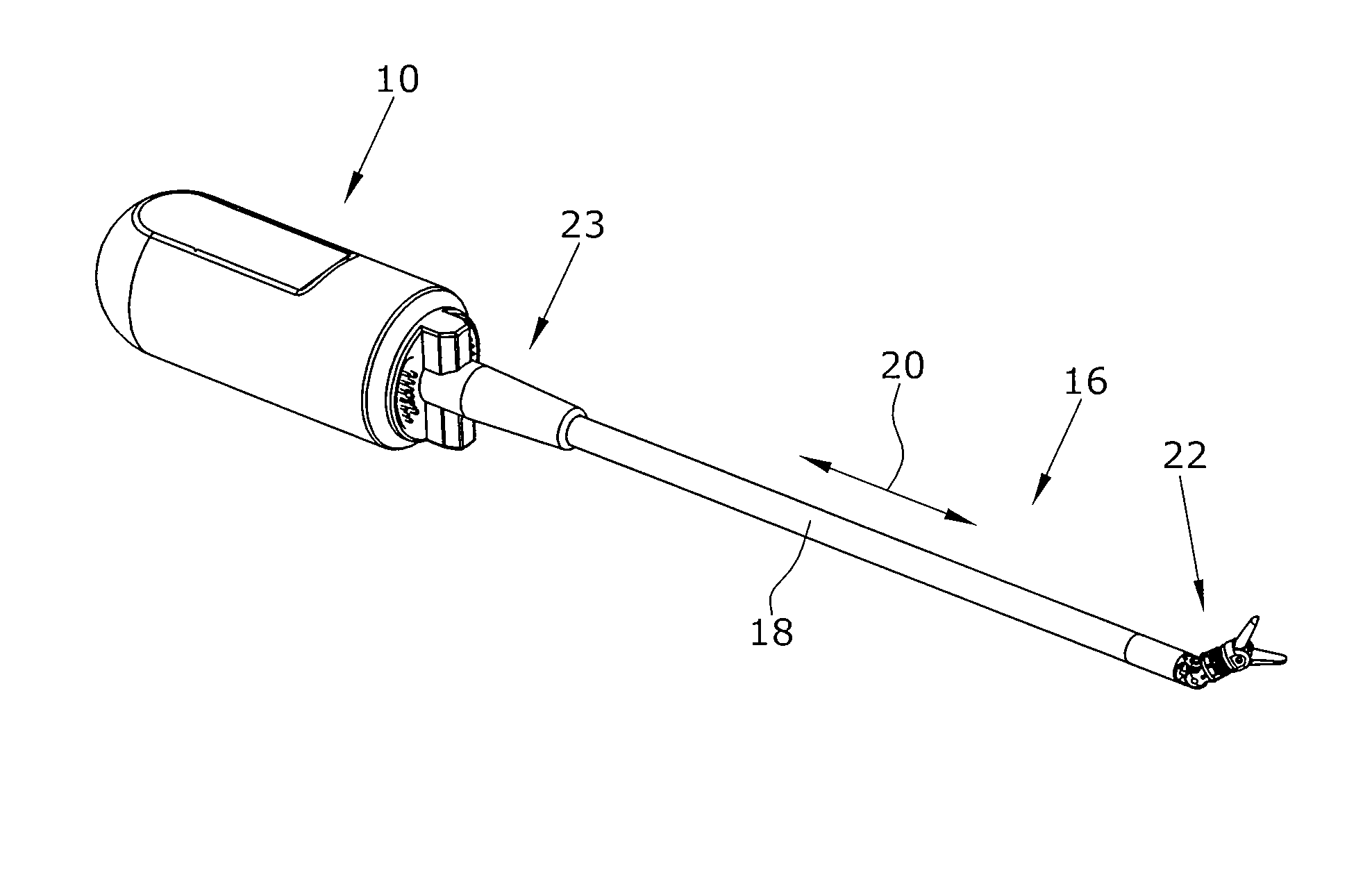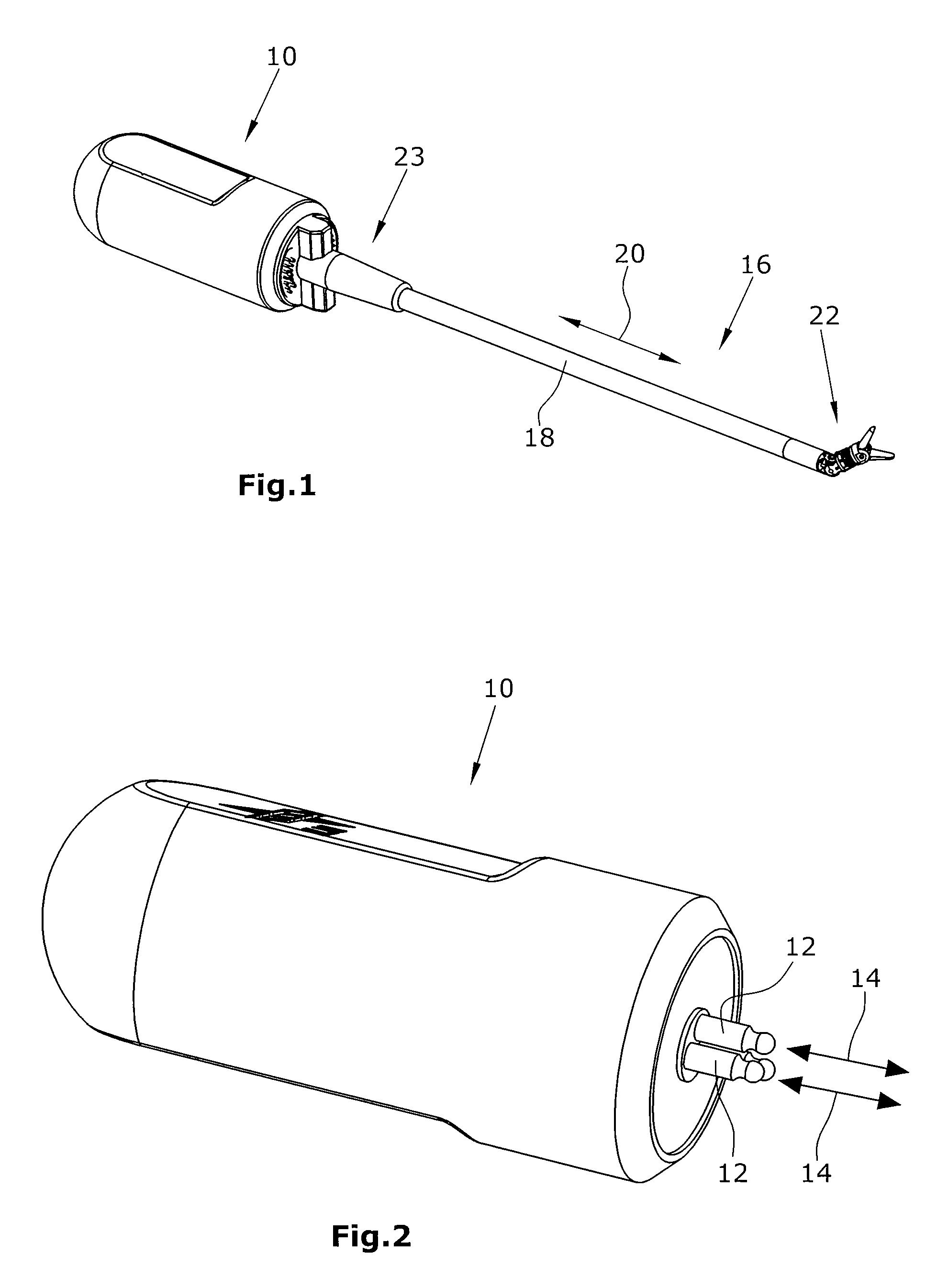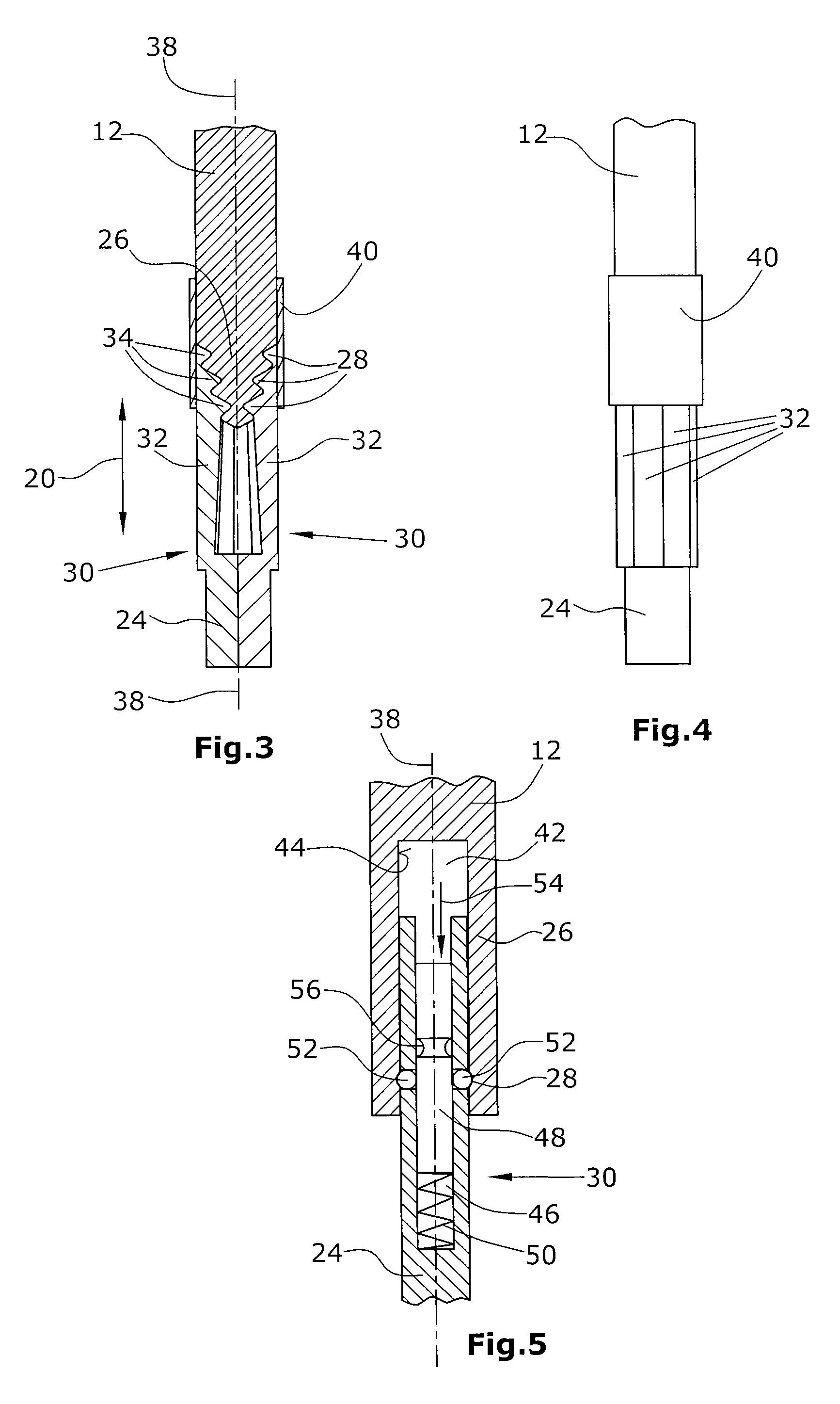Surgical manipulation instrument
a technology of manipulating instruments and surgical instruments, applied in the field of surgical manipulation instruments, can solve the problems of reducing the space requirements of structural space, limiting the freedom of movement of surgical instruments, and affecting the accuracy of the monitor image, so as to achieve the effect of reducing the space requirements
- Summary
- Abstract
- Description
- Claims
- Application Information
AI Technical Summary
Benefits of technology
Problems solved by technology
Method used
Image
Examples
Embodiment Construction
with reference to preferred embodiments and to the accompanying drawings.
BRIEF DESCRIPTION OF THE DRAWINGS
[0027]In the Figures:
[0028]FIG. 1 is a schematic perspective view of a surgical manipulation instrument,
[0029]FIG. 2 is a schematic perspective side elevational view of the drive device,
[0030]FIG. 3 is a schematic sectional view of a part of a first preferred embodiment of a coupling device,
[0031]FIG. 4 is a schematic top plan view on the portion of the coupling device illustrated in FIG. 2,
[0032]FIG. 5 is a schematic sectional view of another embodiment of a portion of a coupling device,
[0033]FIG. 6 is a schematic perspective view of a further embodiment of a coupling device in the uncoupled state,
[0034]FIG. 7 is a schematic perspective view of the coupling device illustrated in FIG. 6, the coupling device being in the coupled state,
[0035]FIG. 8 is a schematic perspective view of a further embodiment of a coupling device in the uncoupled state, and
[0036]FIG. 9 is a schematic pe...
PUM
 Login to View More
Login to View More Abstract
Description
Claims
Application Information
 Login to View More
Login to View More - R&D
- Intellectual Property
- Life Sciences
- Materials
- Tech Scout
- Unparalleled Data Quality
- Higher Quality Content
- 60% Fewer Hallucinations
Browse by: Latest US Patents, China's latest patents, Technical Efficacy Thesaurus, Application Domain, Technology Topic, Popular Technical Reports.
© 2025 PatSnap. All rights reserved.Legal|Privacy policy|Modern Slavery Act Transparency Statement|Sitemap|About US| Contact US: help@patsnap.com



